Motorhome Safety on the Road
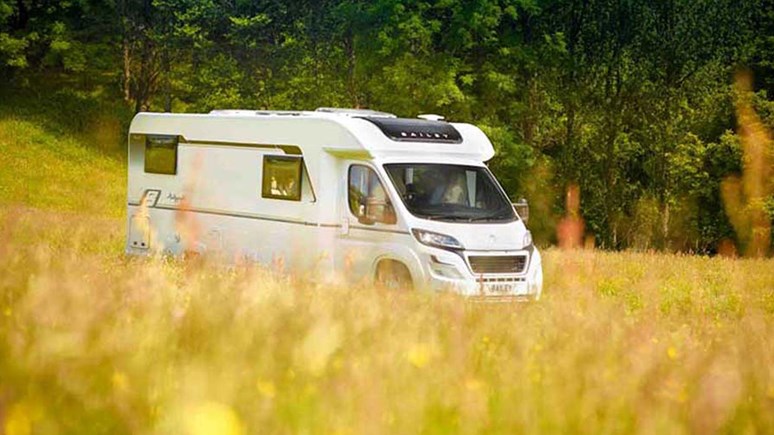
Some important safety factors to consider
To enjoy your motorhome leisure time to the full it is worth investing some time before a trip to promote safe and trouble free conditions. This guide covers many of the safety and legal aspects of motorhome use that should help keep you safe on the road at home and abroad. References are provided to other sources of information that expand on some of the topics covered.
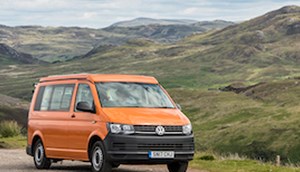
Although the term motorhome is used throughout this guide it applies equally to all forms of motorised habitation unit whether a campervan, coachbuilt, A class or panel van conversion.In law, all motorised habitation vehicles are known as motorised caravans no matter what size they are.
The base vehicle
At the heart of road safety is a safe vehicle and for this it is essential for an annual service to be carried out. The manufacturer’s recommendations for checks and replacements should always be observed.
Recommendations always include the normal owner checks on things such as oil, water and tyre pressure levels. While all checks are important, motorhome owners need to take particular care over tyre pressure and condition because in most cases motorhomes will be loaded up to or close to their maximum weight limits.
Tyre checks
- Replace tyres showing signs of cracking or bulging
- Uneven signs of wear should be checked out with a tyre specialist, delay may result in premature tyre failure
- Use a good quality pressure gauge to check tyre pressures (when cold) regularly. Under inflation or over inflation can reduce tyre life and may impair road holding and braking
- A tyre inflator suitable for cars is unlikely to be able to cope with the higher pressure and volume in a larger vehicle tyre
- The vehicle handbook should show the correct tyre pressures. Where there is any doubt, especially where the tyres have been changed from the original specification, check with the tyre manufacturer
- Do not forget the spare wheel pressure (if supplied)
- Tyres have a limited life irrespective of mileage. For leisure units that spend a substantial time stationary, replacement of tyres after a maximum of seven years is recommended. Check the date-mark on the tyre for the date of manufacture. Refer to our Tyres and tyre care guide for more information.
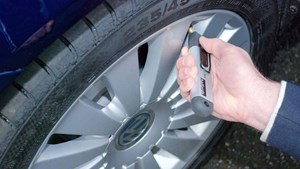
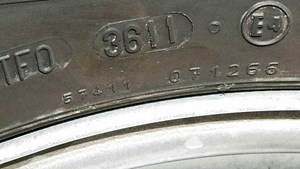
Payload and loading
Payload is a general term to indicate the weight that may be carried in a motorhome or a component part fitted to it before it reaches its maximum permitted weight on the road.
National Caravan Council (NCC) approved motorhomes generally indicate a Mass in Running Order (MiRO) and a Maximum Technically Permissible Laden Mass (MTPLM) – also known as the Maximum Authorised Mass (MAM). Payload is considered to be the difference between the two figures and the allowable weight you can put on board.
Unfortunately, while the MTPLM is a fixed figure and equivalent to the MAM indicated on the vehicle weight plate, MiRO now varies depending on the manufacturer. It normally includes the motorhome in a condition ready to travel, with 75kg allowed for the driver, 90 per cent full fuel tank and gas tank loaded to 90 per cent of normal capacity. It may also include an allowance for freshwater, with older UK motorhomes often allowing for a 90 per cent full tank. However, now UK and Continental manufacturers usually allow for either an empty tank or one filled to 20 per cent capacity. The amount of gas allowed for in the MiRO can be limited to just one lightweight cylinder even though the gas locker has room for two cylinders - and standard heavy ones at that.
Many smaller and some European motorhome converters are not part of the National Caravan Council (NCC) Product Approval Scheme and may simply class payload as the difference between the MAM and the unladen vehicle weight.
However the payload is calculated or described, the crux of the matter is every motorhome has a weight plate showing its MAM and weight limits for the axles and these limits must not be exceeded and should not been seen as a target weight to aim for.
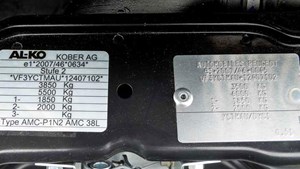
Overloading
Police roadside weight checks reveal many motorhomes on the road are overloaded. Apart from the risk of being taken to court and fined, overloading has the potential to cause failure of tyres and suspension systems and affect braking and handling performance so it is important you are aware of the total weight of your vehicle.
Public weighbridge and plated weights
At the earliest opportunity, take your motorhome to a public weighbridge, filled as you would expect for a major trip and take along the normal load of passengers.
Have the motorhome weighed twice on the weighbridge, one with both axles on the weighing platform and another with one axle just off the platform. From these readings you can check your vehicle is within the permitted MAM and the front and rear axle loadings, as shown on the vehicle plate usually found under the bonnet.
If any weight exceeds the plated limit you will need to reduce your payload or consider the possibility of replating the vehicle for a higher weight limit – assuming your driving licence will permit you to drive a larger vehicle. See Driving Licences for more infomation. You are strongly advised to consult your dealer or a specialist company like SV Tech who will be able to advise if such an action is possible on your vehicle. As a minimum tyre pressures will change and possibly the tyres will need uprating too.
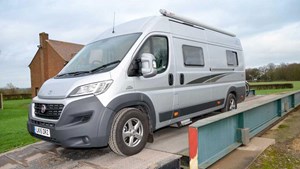
Adding bike racks and back boxes
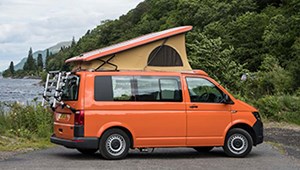
Bike racks, boxes and loading of rear garages are particular critical loading situations. Ensure the motorhome is designed to take the load you are intending and any bike rack is also rated for the bikes you want to carry. Electric bikes are generally considerably heavier than standard cycles and motor scooters and motor bikes are even heavier.
Dangers of rear loading
Heavy loading at the extreme rear provides the real possibility of overloading of the rear axle. Not only is this unlawful, the effect of reducing the front axle load due to a tipping rearwards means general handling and in particular steering and traction may be severely affected.
Suspension aids
Suspension aids and modifications are available but these are generally aimed at improving the quality of ride. They will not enable you to exceed the plated weights of your vehicle. See guide Suspension modifications for more information.
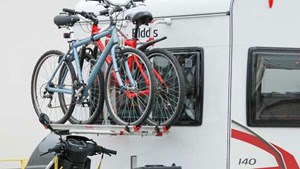
Secure all loads
Always check external and internal loads are secured in place. Remember you - the driver - are responsible at all times in law to ensure you do not overload your vehicle or allow it on the road in an unsafe condition.
Some tips to keep you safe on the road
Think motorhome
A motorhome has to be driven more sedately than your usual car especially when cornering and manoeuvring.
Instability at high speeds
High sided units are particularly susceptible to the draught from passing HGVs and high winds.
Instability from loading
Most vehicles are not designed to travel with full water tanks so this may cause instability. Partially full tanks and unbalanced loading can cause instability.
Be responsible
Heavily loaded motorhomes may not keep up with other vehicles on the road, particularly on uphill stretches, so be prepared to pull over when safe to do so to allow faster vehicles to pass.
Driver fatigue
Additional concentration may be needed especially on country lanes. Tiredness can kill, remember you are in a motorhome so it is easy to stop in a layby and brew up.
Watch your height
The law says if your vehicle is over 3 metres high you must have a notice displayed in the cab showing its height. It can be useful to have this height available, even when under 3 metres, as a reminder when encountering obstructions off the public highway, such as car park height barriers. While not a legal requirement for any motorhomes, it can sometimes be useful to have your vehicle width to hand.
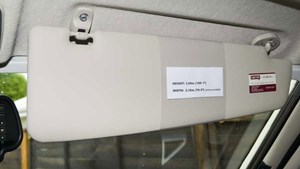
Danger reversing
Consider installing audio reversing aids and a rear view camera. Watch out for low overhanging branches. It is easy to hit them when concentrating on low level obstructions.
Spare wheel
Are you familiar with the spare wheel location and the jack - can you change it if the need arises?
Breakdown services
What will you do if you need recovery? Does your policy adequately cover your motorhome size and weight? The Club in partnership with RAC offer the Arrival Service that may well meet your needs.
Checks before setting out
- Tyre condition and pressure, including the spare
- Wheel bolt torque setting
- Functioning of lights
- Security of any loads not stored in lockers
- Lockers inside and out, fridge and internal doors, windows and roof openings are closed and locked
- Also check that muffling has been applied to ovens, hobs, grill pans and other items that give rise to irritating rattles to distract the driver.
See also the Club’s pre-journey check lists for a handy downloadable aide memoire.
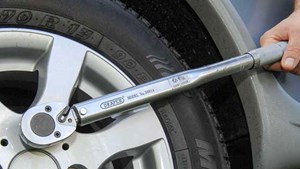
Driving licences
- Basic driving licences (category B) gained since 1 January 1997 provide an entitlement to drive a vehicle with a MAM of up to 3,500kg
- Driving licences gained before 1 January 1997 include category C1, which enables you to drive larger motorhomes with a MAM up to 7,500kg
- If you have category C1 licence entitlement gained with a pre-1997 driving licence, this will be lost when you reach the age of 70 unless you specifically reapply for a licence with this entitlement and submit a D2 form and a medical report form D4
- Drivers who passed their driving test in 1997 or later who wish to drive a motorhome with a MAM exceeding 3,500kg need to take another test to gain further entitlements.
- In most cases the same drivers will be able to tow a trailer upto 3500kg on a BE driving licence entitlement assuming the motorhome trainweight is adhered to. Further information is available in the Driving Licence guide.
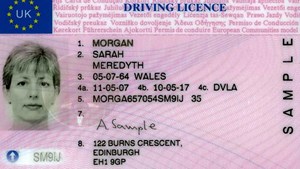
Motorhomes with MAM over 3,500kg can sometimes be down-rated to permit them to be driven by a category B licence holder. However, such down rating can only be permitted if the lower MAM rating is practical for use on the road. Refer to SV Tech’s website for further information.
Speed limits
A motorhome with an unladen weight not exceeding 3,050kg is subject to the same national speed restrictions as a car. A motorhome with an unladen weight over 3,050kg is restricted to 50mph on a single road and 60 mph on a dual carriageway, but is still permitted to travel at 70mph on a motorway.
The concession of car speed limits for lighter motorhomes and the limit of 70mph for heavier motorhomes on motorways does not apply to similar goods vehicles and minibuses. Hence it is important to check your V5C document has the body type correctly indicated as motor caravan.
Irrespective of the unladen weight, when you are towing a trailer with your motorhome the speed restriction is 50mph on single carriageways and 60mph on motorways and dual carriageways. Motorhomes towing a trailer may not use the right hand lane of a motorway with three or more lanes.

Seat belts
For many years cars have been fitted with seat belts to all passenger seats and now all modern motorhomes are to have seat belts fitted to all designated travelling seats. Other seats not designated as travelling seats and designed for use when static do not have to have seat belts fitted and should not be used when travelling.
In most cases, seats for static use will be side facing. Seat belts are now not permitted for these side-facing seats because in the event of an accident such seat belts can cause harm to vulnerable parts of the body.
Older motorhomes may only have the cab seats fitted with seat belts and this raises the question of the legality of carrying passengers in the leisure accommodation when travelling. The same question can arise with a modern motorhome as there is no requirement for manufacturers to provide the same number of travelling seats as there are berths.
The following is a brief guide to the legislative requirements in Britain but ultimately the interpretation of the law is down to the courts, based on the facts of any particular case.
- Where seatbelts are provided they must be worn
- Motorhomes first registered on or after 20 October 2007 must have seat belts for designated travel seats
- There are specific requirements for children and seatbelts. Children three years and under must be in a child car seat. If there is no seat belt, they cannot travel
- A child aged three or older can travel in a back seat without a car seat and without a seat belt if the vehicle does not have one, although this is not recommended. Refer to www.childcarseats.org.uk/the-law/ for further information
- Travelling in a motorhome without a seat belt where there are no available seat belts is not specifically outlawed. However, if a motorhome is stopped by the police and the officer is of the opinion the seating arrangements for the number of passengers being carried are inadequate and are likely to endanger other passengers or the stability of the vehicle, then he or she may instigate a prosecution. Powers for such a prosecution exist under Regulation 100 of the Construction and Use Regulations and/or under Section 40a of the Road Traffic Act 1988: Using Vehicles in a Dangerous Condition.
Where a motorhome was registered before 20 October 2007 and travelling in seat belts is not possible, to reduce your exposure to prosecution and consequences from your motorhome insurer:
- Only carry the number of passengers which the motorhome was designed to carry and ensure the vehicle is not overloaded. Thus a two-berth motorhome with only the two cab belted seats should only ever carry two people
- Check with your insurance company at the outset if you intend to carry passengers where there are insufficient seat belts available.
Irrespective of the law it is highly recommended that travel is only undertaken with the use of appropriate seat belts.
Fitting of seat belts
Only forward and rearward facing seats are suitable for use as a travelling seats and fitting of seat belts. In most cases, if a seat was not constructed as a travelling seat it is unlikely to be fit for travel use. Seat belts require secure anchorages to ensure they are able to withstand the forces arising in the case of a collision and this is a job for the specialist.
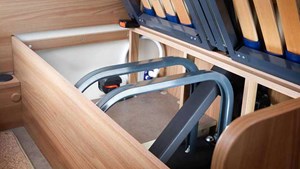
Parking at the side of the road
Parking at the roadside or in a layby to stay overnight is not against the law, but as part of the highway the police have the right to move you on. There is a further potential problem when parking overnight in such locations if you consume alcohol as it is an offence for a person to be in charge of a vehicle on a road or other public place, which could include a car park.
There is no definition of what “in charge means” and there is no need for the prosecution to prove that there was a prospect of a person likely to drive while unfit. It is for the defendant to prove there was no prospect of driving the vehicle.
At some localities there are local byelaws that prohibit overnight stays in specific roads, which can be enforced by the local authority.
Travelling Abroad
Motorhome travel abroad can be a real joy, especially during the winter months with the opportunity to tour on uncrowded roads and soaking up some winter sun. Additional care and preparations are needed to ensure your visit is trouble free. Details of the various requirements can be found in the Travelling Abroad guide.
The following check list provides the basic essentials to remain legal and safe.
- Take original documents covering driving licence, insurance certificate and registration (V5C). For a hired vehicle the hirer will not usually release the original V5C document so you need to obtain a VE103R Vehicle on Hire Certificate
- Headlamp adapters essential for Continental roads unless vehicle has a flat beam pattern or is switchable – check your handbook or ask a dealer to clarify
- Spare vehicle light bulbs – a requirement in some countries but worth carrying anyway
- Warning triangle – a requirement in some countries
- Reflective vests - a requirement in some countries and most require them to be donned before leaving the vehicle.
- Speed limits abroad will be indicated in km/hr and there are differences in limits for different vehicles throughout European countries
- Spare driving glasses – a requirement in Spain
- Red and white hatched board if you have a bike rack – an aluminium board is required in Italy
- UK stickers
- Locate safe overnight stops – use of service station aires on Continental motorways is not recommended by the Club
- Satnavs are a boon abroad, make sure its up to date, check if the country you are driving in accepts the use of speed camera information and dashboard cameras
- Ensure your MOT certificate and road fund tax are up to date and valid for the duration of the trip - to be legal in Europe you have to be legal in the UK
- Certain cities in Europe have low emission zones like London – see our LEZ and CAZ advice here.
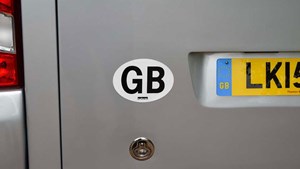
Towing
Most motorhomes have the capacity to tow a trailer but there are legal restraints involving the motorhome manufacturer’s towing limits and the type of driving licence you hold. The licence issues are dealt with in some detail in the Club's guide on Driving Licences and further information on towing is given in our Guide, Towing with a motorhome. Also refer to the speed limits section above.
There are several safety issues
- Correct towbar. It is a legal requirement for towbars fitted to modern (type approved) motorhomes to comply with EU Directive 94/20 or Regulation 55. Motorhomes built before type approval came into existence are not required to have a type approved towbar fitted but one should always be used if it is available. Any motorhome registered in the UK after 29 October 2012 may only use a towbar that complies with Regulation 55.
- Correct fitting. Electrical circuits in modern motorhomes are complex and the use of a specialist towbar fitter with the Quality Secured Accreditation of the National Trailer and Towing Association is recommended.
- Annual checks. When the annual service for your base vehicle is due ensure either your garage or a towbar specialist checks the towbar for security of attachment and for signs of corrosion. Since 2009 the towbar has been subject to inspection as part of the MOT.
- A-frames. The use of an A-frame to tow a small car behind a motorhome is generally accepted by the authorities in the UK if it is designed to conform to trailer regulations, but not neccarsarly in mainland Europe. If in any doubt use a pupose built vehicle trailer. Further information is available from the Department for Transport at www.gov.uk/government/publications/a-frames-and-dollies and in our guide, Towing with a motorhome.
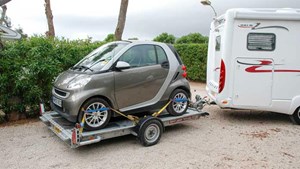
Advise your insurer
Adding a towbar to your motorhome is classed as a modification that must be declared to the vehicle’s insurance provider. If you use The Camping and Caravanning Club’s Club Care insurance provider you will automatically be covered. Other insurance companies may make an additional charge. Your vehicle’s insurance will then cover you for any third party damage while you are towing. You will need separate insurance to cover the trailer and anything it is transporting against damage, fire and theft, See Club Care Insurance for details.
Some insurance companies need to be advised specifically what you intend to tow (trailer, car on A-frame or car transporter, for example). The type of towing that most often proves a problem with insurance companies is A-frame towing. If you plan to do this, check with your motorhome insurer and the insurer of the car first.
Importing a continental motorhome
Some campers consider buying a motorhome from a dealer based in Europe, either for ease of obtaining a left-hand-drive motorhome or for potential cost savings. Savings are not always so evident when you factor in the lower specification of European motorhomes intended for their home market compared with those specified for the British market. Any savings made also have to be put against the cost and hassle of the import procedure. This procedure includes dealing with vehicle insurance in Europe and in the UK before being registered with the DVLA and appropriate notifications and documentation to HM Revenue and Customs and the DVLA.
Details of how to proceed with the personal importation of a motorhome are covered on the Government website.
It is important to ensure an imported vehicle complies with UK legislation. While all European vehicle design and manufacture is covered by EU directives and type approval, there are three elements where a motorhome built specifically for mainland Europe use may not be legal in the UK, namely incorrect headlamp alignment, speedometer dial showing only kilometres per hour and the incorrect location of a rear fog lamp. All three items need to be dealt with before the DVLA will register the vehicle for use in the UK.
Self-build
The idea of fitting out your own motorhome or campervan to suit your requirements can be appealing. However safety issues referred to in this guidet still apply and a lot more elements come into play during the construction process if the vehicle is to be safe and legal.
All new motorhomes are subject to vehicle type approval certification, whereby vehicles have to comply with a lengthy list of British and European standards and legislation. Thus building your own motorhome should not be taken lightly. Help is available through the Self Build Motor Caravanners Club.
Mass-produced vehicles are type approved by the European Community Whole Vehicle Type Approval (ECWVTA) process and these vehicles are then eligible for sale throughout Europe. This approval process is undertaken by independent bodies involving comprehensive testing, certification and confirmation of the conformity of production. For the production of single vehicles within the UK there is an alternative type approval scheme known as Individual Vehicle Approval (IVA). Self-build vehicles can be type approved through IVA, which is a much simplified process and involves the vehicle being inspected by the Driver and Vehicle Standards Agency (DVSA) in Britain and Driver and Vehicle Agency (DVA) in Northern Ireland.
Many individual convertors and companies circumvent this process by using a used panel van that has already been registered in the UK. However, the IVA process is invaluable as the vehicle will be inspected by experienced specialist personnel who will check fundamental vehicular safety systems.
On completion of a conversion of a pre-registered panel van, you are required to contact the DVLA to inform them or the change of use and have the vehicle description amended. The DVLA sets out guidance for this here. It is now highly unlikely that DVLA will change a registration document to have the body type amended to motor caravan, however most insurance providers require approval of the interior fit and refusal for exterior look by DVLA before they will insure the vehicle.
All self-build motorhomes and campervans should also be inspected to ensure the habitation area is safe, with particular attention to the electrical and gas systems installed. Ideally there should be built to the same standard as new vehicle conversions, there are a number of British Standards that give sound construction advice. The Club highly recommends that the vehicle installation is inspected and signed off with suitable certification. If the conversion company won't do this then we suggest you find a more reputable convertor who will. In most cases insurance companies will also require some form of certification by a suitably-qualified person before insuring such a motorhome or campervan. The Club's insurance service, Club Care, will provide cover for self-builds.
Safe off the road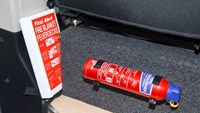
In this guide we have dealt with keeping your motorhome safe and legal as a road vehicle. It is also important to consider the safety of your on-board gas and electrical systems and appliances.
The Club recommends you have an annual service undertaken by a workshop belonging to the Approved Workshop Scheme (AWS). These workshops will check out the safety of your habitation systems.
 The AWS standard service does not include servicing a fridge unless it is specifically requested. Also not included is the cleansing of the fresh water system, which needs to be descaled and disinfected at least once a year to prevent the build-up of scale and bacteria.
The AWS standard service does not include servicing a fridge unless it is specifically requested. Also not included is the cleansing of the fresh water system, which needs to be descaled and disinfected at least once a year to prevent the build-up of scale and bacteria.
You should ensure you have a suitable fire extinguisher and fire blanket in good condition on board.
Useful contact and sources of further information
Payloads, loading and replating:
- SV Tech Ltd: www.svtech.co.uk
- Watling Engineers: www.watling-towbars.co.uk
Self-build:
- Self Build Motor Caravanners Club: www.sbmcc.co.uk/
- DVLA document - Converting a vehicle into a motorhome: www.gov.uk/government/publications/registering-a-diy-caravan
- DVLA document - Motor Caravans – changes to construction requirements from 29 April 2012 www.gov.uk/government/publications/motor-caravans-changes-to-construction-requirements-from-2012
Travelling abroad
- https://www.campingandcaravanningclub.co.uk/travelabroad/
- https://www.rac.co.uk/drive/travel/driving-in-europe/checklist/
A-frame towing
- Department for Transport document: https://www.gov.uk/government/publications/a-frames-and-dollies/a-frames-and-dollies
Glossary
Gross vehicle weight (GVW), Gross vehicle Mass (GVM), Maximum Authorised Mass (MAM), Maximum Technically Permissible Laden Mass (MTPLM)
Some of the terms found to describe the maximum weight of the motorhome, which must not be exceeded if the vehicle is to be legal on the road.
Gross Train Weight (GTW), Combined Maximum Authorised Mass
The maximum permitted combined weight of the motorhome and trailer as specified by the motorhome manufacturer.
Unladen weight
The weight of the unladen motorhome. This does not include the weight of any fuel or driver.
Weight plate
This plate or sticker is found on all vehicles and denotes the GVW, GTW and maximum permitted front and rear axle loadings. Usually found under the bonnet with the weights listed in order as above starting from the top of the plate. ,
Mass in Running Order (MiRO or MRO)
Mass of the motorhome equipped to the manufacturer’s standard specification and including an allowance of 75kg for the driver and 90 per cent of the fuel tank. An allowance for gas should be included but this can be for just one lightweight cylinder. An allowance for fresh water may be included but varies with manufacturer.
User payload
The difference between GVW and MRO, this is intended to provide an allowance for passengers, essential habitation equipment, possibly some optional equipment and personal effects.
Essential habitation equipment
Items and fluids required for safe and proper functioning of habitation equipment
Optional equipment
Items available from the manufacturer or dealer over and above the standard specification.
